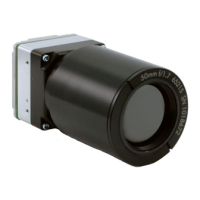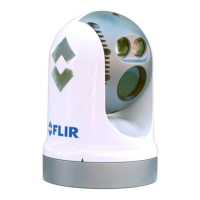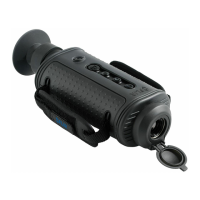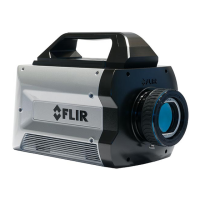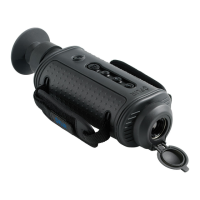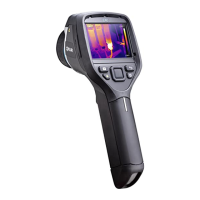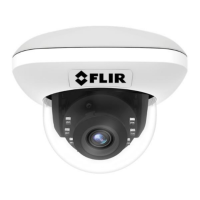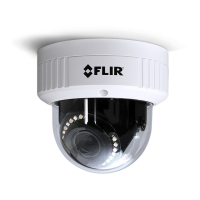Tau User’s Manual 3—Basic Operation of the Tau and GUI
TAU-0035-00-10, version 100 April 2009 3-11
Flat-Field-Correction Mode: Tau includes internal
mechanisms for periodically improving image quality via a
process called flat-field correction (FFC). During FFC, a
small calibration flag (a shutter) rotates in front of the
detector array, presenting a uniform temperature (a flat
field) to every detector element. While imaging the flat
field, the camera updates correction coefficients, resulting
in a more uniform array output. The video image is frozen
during the entire process, which takes less than a second,
and it resumes automatically thereafter. Repeating the
FFC operation often prevents the imagery from appearing “grainy”. This is especially important
when the camera temperature is fluctuating, such as immediately after turn-on or when
ambient temperature is drifting. FFC can be controlled manually at any time using the Do FFC
command button.
Tau provides three FFC modes:
Automatic: In the Automatic FFC mode, the camera performs FFC whenever its
temperature changes by a specified amount or at the end of a specified period of time
(whichever comes first). When this mode is selected, input windows are available in
the FLIR Camera Controller for specifying the temperature change and the number of
frames that trigger automatic FFC. The temperature change is specified in degrees,
with valid values in the range 0 to 100 in 0.1 degree increments. The time period is
specified in analog video frames (33ms NTSC, 40ms PAL), with valid values in the
range 0 to 30,000 frames.
Note
Manual: In Manual FFC mode, the camera does not perform FFC automatically based
on specified values of temperature change or expired time. The FFC will be performed
using the internal shutter when the “Do FFC” button is clicked.
Note
External: In External FFC mode a uniform source (blackbody) must be placed in front
of the camera. The image of this uniform source will be subtracted from all
subsequent images. This feature is useful if there are lens or lens mount non-
uniformities that are not corrected by an internal FFC.
FLIR recommends using the factory default values for the two automatic-FFC parameters if
possible. These values were selected to maintain a high degree of image quality over all
camera operating conditions.
Large camera temperature excursions cause the camera to perform the FFC operation (even
with Manual FFC mode selected), typically at temperature crossings near 0°C and 40 °C.
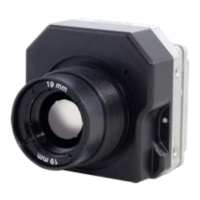
